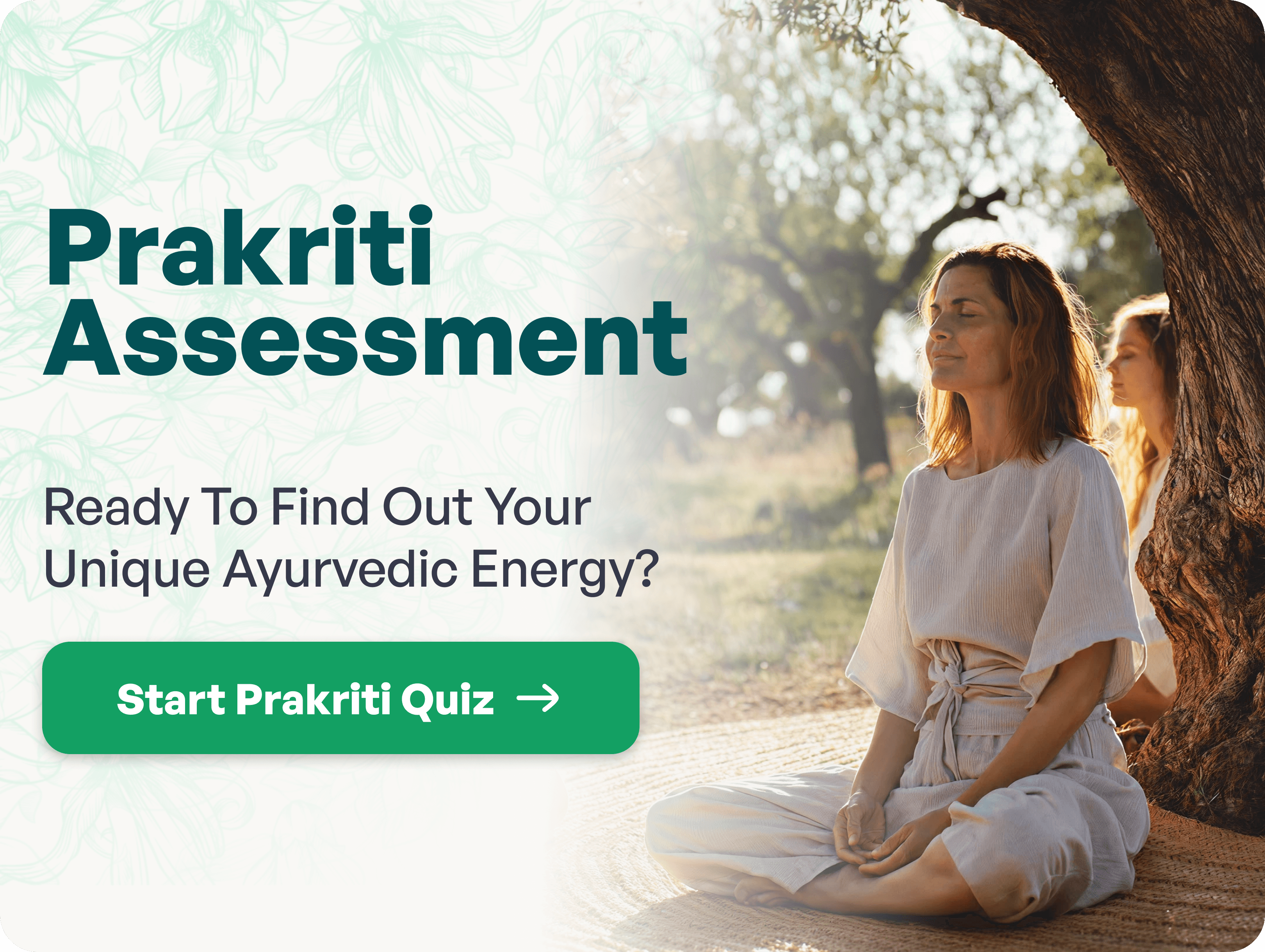Written by Dr Reshma N Babu
Medically reviewed by Dr Naveen Chandran
Updated on January 29, 2025
Ayurvedic Massages Guide for Menopausal Health
Menopause is a natural and inevitable phenomenon which is unique to women and marks the end of their reproductive cycle. During this transitional period, women undergo various physical and emotional imbalances, and the severity of these symptoms varies from individual to individual. Ayurveda focuses on positive dietary and lifestyle changes, using certain modifications and incorporating herbal and mineral wealth to meet the body's needs. Self-care techniques like massages can help women manage the symptoms during menopause gracefully. This blog will allow you to explore the benefits of Ayurvedic massage and self-care rituals for menopausal women with some natural remedies for menopausal relief.
Jump to section
- How to Balance Menopausal Symptoms with Ayurvedic Massages?
- How Massages Are The Best Sources of Self-Love
- Understanding Different Types of Relaxation Techniques as Self-Care Rituals for Menopausal Comfort
- To Conclude
How to Balance Menopausal Symptoms with Ayurvedic Massages?
According to Ayurveda, menopausal symptoms are Vata and Pitta dominant, whereas kapha dosha levels remain stable. Why? It is because a woman's body changes from a pitta dominant adulthood, which covers the reproductive phase of a woman, to late adulthood, which is vata prevalent as vata in your body aggravates as you age. So, how can Ayurvedic massages help you to balance these symptoms? Let's find out how.
And this is where ayurvedic rejuvenation therapy, better known as the 'Rasayana' therapy, plays a role. Rasayana therapy/Rejuvenation therapy involves procedures and techniques that help increase your body's moisture content. Before learning why rejuvenation therapy can solve your menstrual symptoms, let us understand why increasing your 'juice content' in your body is essential. Menopause being a vata dominant phase accompanied by Pitta aggravation, the combined effects of both these doshas leave your body dehydrated. Prolonged effects of aggravated vata and pitta lead to tissue depletion, leading to various other complications. The drying effects of Vata need something soothing, and the outbursts of pitta energy need something to calm down its aggravation. So, to balance these effects, your body needs to increase its moisture content.
Self-massages is one of the mighty deep hydration techniques that can effectively improve the 'juice in your body' by penetrating deeper tissue layers and providing essential nutrition. Therefore, massages can help you soothe the dehydrating and drying effects of aggravated vata by increasing the penetration of oil deep into the skin. They also calm down the pitta symptoms by providing a cooling effect. Massages are one of the best hydration techniques that can help you rejuvenate your tissues, and Ayurveda recommends reducing ageing signs.
What Are the Benefits of Self-Massages?
- It helps to provide deep hydration and adequate nutrition
- It promotes mental tranquillity
- Boosts circulation
- Boosts mental function
- Relieves pain and inflammation
- It improves skin texture and stimulates hair growth
- Combats irritation
- Enhances mood
- Lubricates internal organs
- Strengthens bones and joints
- Improves joint mobility.
Now let us move on to explore the benefits of Ayurvedic self-massages
How Massages Are The Best Sources of Self-Love
Ayurveda considers lifestyle to be one of the critical factors that enormously impact your health and well-being. In treating menopausal symptoms, Ayurveda stresses bringing positive lifestyle modifications along with specific dietary guidelines. The Ayurvedic way of living focuses on using mineral wealth, herbal medications and relaxation techniques like massages and meditation.
During menopause, women experience hot flashes, vaginal dryness, brain fog, mood swings, loss of libido, anxiety, anger, panic attacks, palpitations, bloating, weight gain, difficulty in sleeping, night sweats, joint pain and inflammation, thinning of hair, dry skin, brittle nails and bones. Ayurveda suggests the use of 'snehana' in conditions where vata aggravates, making your body run out of juice or moisture content.
How Does Ayurveda Explain the Concept of Snehana?
Snehana, an external oleation therapy, is a prerequisite for panchakarma/purification procedures in Ayurveda. Self-massage/ Abhyanga is one of the basic yet powerful techniques that helps to alleviate aggravated vata and, thereby, menopausal symptoms caused by vata. The Sanskrit word snehana means oil/ love. You can perceive it as covering your body with the warmth and love of oil.
Abhyanga- Self-Massage to Calm Your Vata
Ayurveda recommends abhyanga/oil massage as one of the daily routines/ dinacharya. It is one of the relaxing techniques with enormous therapeutic benefits. Daily abhyanga is one of the critical factors that can help you prevent the signs of ageing and impart longevity and health.
What is the Process to Perform Abhyanga?
Abhyanga is not just about applying oil all over the body but is a procedure you must perform with dedication and engagement. You can perform it using warm oil on the entire body, including the soles, from the scalp to your feet. For performing abhyanga, it is ideal to massage your body with mild pressure for at least fifteen minutes. Sesame oil is one of the best oils for abhyanga, and you can also use other vata-balancing oils like almond or medicated oils. Abhyanga should be performed in long strokes on the limbs and circular strokes on the joints moving up and towards the heart.
How Often Should You Perform Abhyanga?
You can perform Abhyanga daily and for vata balancing effects. Practising it at least three to four times a week is ideal.
Other Self Massages
Shiro Abhyanga - The Instant Stress Buster
Shiro Abhyanga/Abhyanga of the head involves massaging your head, shoulders and neck with a warm oil. It soothes and balances your body by providing instant stress relief.
Oil Pulling
The practice involves oil-based oral rinses, which help to pull out toxins from your mouth. You can swish oil around your mouth with cold-pressed oils like sesame or coconut oil for about 15- 20 minutes.
Ear Oiling
Also known as karna purana, this massage technique involves placing a few drops of oil into one ear while lying on one side and waiting 5 minutes for the warm oil to absorb. This technique is highly effective in curing vata imbalances of your head, neck and ears.
Nasal Oiling
Also known as Nasyam, this massage involves placing a few drops of oil into each nostril and tilting the head, followed by taking a deep breath and gently massaging the external part of your nose.
Understanding Different Types of Relaxation Techniques as Self-Care Rituals for Menopausal Comfort
| Techniques | Benefits |
|---|---|
| Aromatherapy | Trying aromatherapy can help with improving menopausal symptoms by relieving the anxiety and depression that women experience during this period. Aromatherapy involves inhaling essential oils or rubbing them into your skin. Lemon oil and peppermint oil are best to treat menopausal symptoms. |
| Warm baths | Warm baths can instantly alleviate your mood by releasing endorphins, the happy hormones calming down your menopausal symptoms. Warm baths hold the double benefits of hydrotherapy and passive body heating, which helps in uplifting mood, improving sleep quality and relieving stress. |
| Restorative Yoga | Practising yoga can help you with better flexibility of your body and control of emotions. Yoga can help you manage menopausal weight gain. Restorative yoga, which requires poses to be held longer than conventional yoga, can help relieve menopausal symptoms. Restorative yoga can be done with the support of properties like folded blankets, chairs or walls. |
| Mindfulness meditation | This technique helps you to focus better, relieves brain fog, and relieves stress and anxiety. This meditation is about living in the present moment, focusing on what's happening around you rather than letting your mind worry about the past or future. This works as a foundation for your awareness of the world around you, helping you to increase your level of tolerance and sensitivity. This allows you to perceive your menopausal symptoms with ease and grace. |
To Conclude
Ayurvedic massage and self-care rituals can help menopausal women get through this transitional phase of life with greater ease and comfort. These practices of self-massages and self-care routines can promote holistic well-being and help menopausal women find relief from common menopausal symptoms. Contact our Nirva health experts for your personalised plans on ayurvedic massages for menopausal symptom relief!
Frequently Asked Questions
Ayurvedic massages help in the deep hydration of your tissues as it helps the oil used for massage to penetrate deep into the skin. Providing deep moisturisation and adequate nutrition relieves the dry and dehydrating menopausal symptoms caused by vata.
Ayurveda considers menopause as a vata-pitta dominant condition. Therefore, herbal drugs that are capable of alleviating vata and pitta can help in relieving menstrual symptoms. Drugs like Shatavari, Arjuna, Cardamom, Fennel, and Ashwagandha are well known for providing menopausal relief.
Apart from including drugs like Shatavari, aloe vera in your diet, Self massages with oils like sesame oil/ coconut oil can help you get better with vaginal dryness.
Dr Reshma N Babu
Dr Reshma N Babu is a passionate, young Ayurveda doctor who strongly believes in sharing the warmth of her knowledge in Ayurveda medicine in caring for people who are suffering from physical and mental imbalances. Dr. Reshma highlights Ayurveda not just as a medical science that cures disease but as a way of living.

8 Effective Face Yoga Exercises to Reduce Marionette Lines Naturally
15 Foods to Avoid with Gallbladder Issues & Best Foods for Gallbladder Health
Understanding Your Gut Type and Its Impact on Health
4 Simple Ways to Manage Hot Flashes at Work
3 Stretching exercises for desk workers - Get Relief from Neck, Back and Wrist Pain









